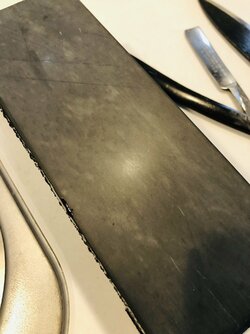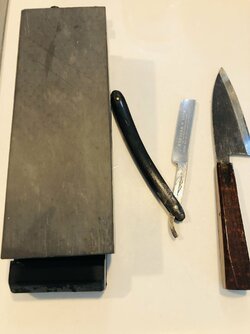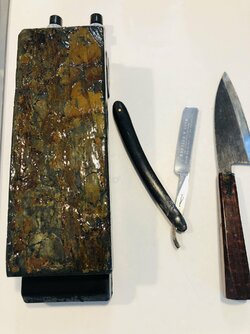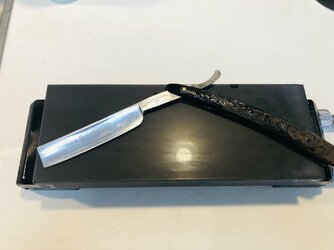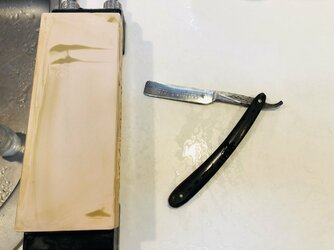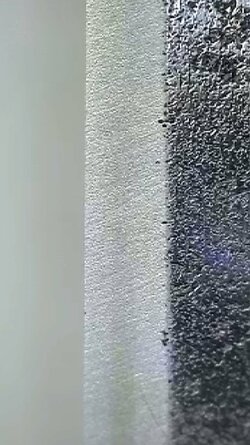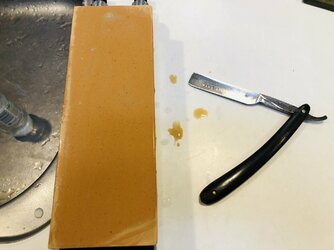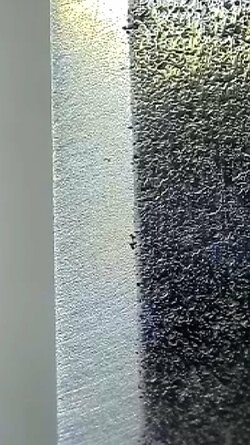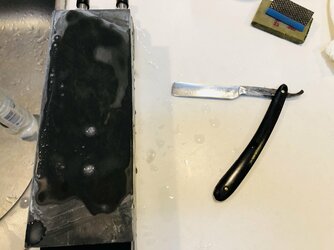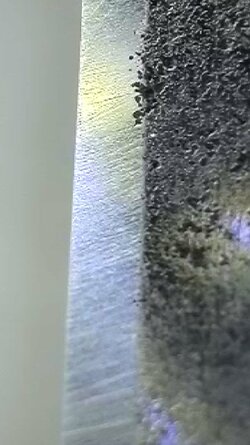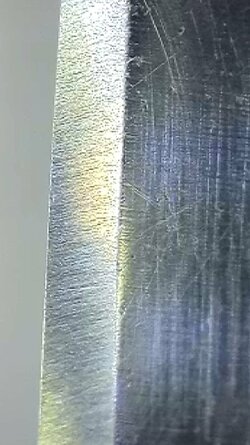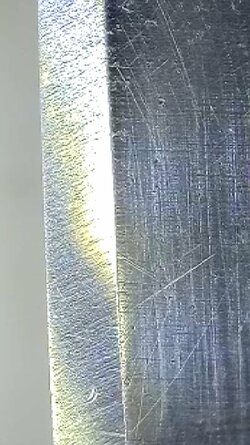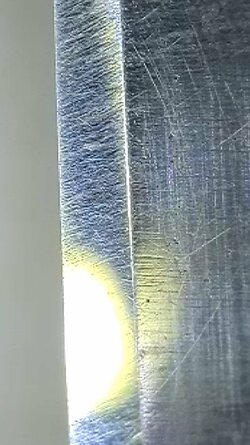Put in some work on my old Wade and Butcher. Stone progression. Figured I would share it.
W&B I believe circa 1890. Don’t let the shine fool you. It’s got some corrosion.

It needed a good flattening so I put it on a Sigma Select II 400. It needed a lot of the surface lapped off before it started working consistently. Very hard stone which like like. Used without slurry. I tried to use the strokes that Dr. Matt frequently uses throughout this process: Alternating 45 deg back and forth; circular; and X strokes.

Here is the edge. Btw, this is a cheap magnifier that clips over the lense of a phone’s camera. Note the deep scratches and non-linearity of the edge.

W&B I believe circa 1890. Don’t let the shine fool you. It’s got some corrosion.
It needed a good flattening so I put it on a Sigma Select II 400. It needed a lot of the surface lapped off before it started working consistently. Very hard stone which like like. Used without slurry. I tried to use the strokes that Dr. Matt frequently uses throughout this process: Alternating 45 deg back and forth; circular; and X strokes.
Here is the edge. Btw, this is a cheap magnifier that clips over the lense of a phone’s camera. Note the deep scratches and non-linearity of the edge.
